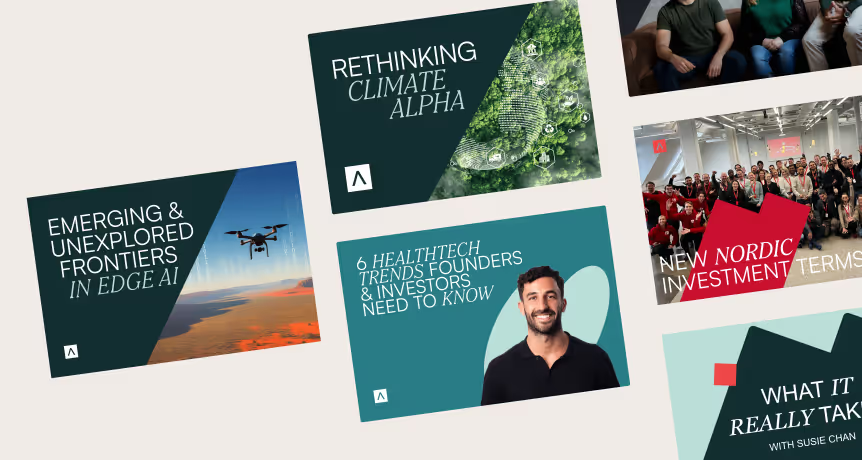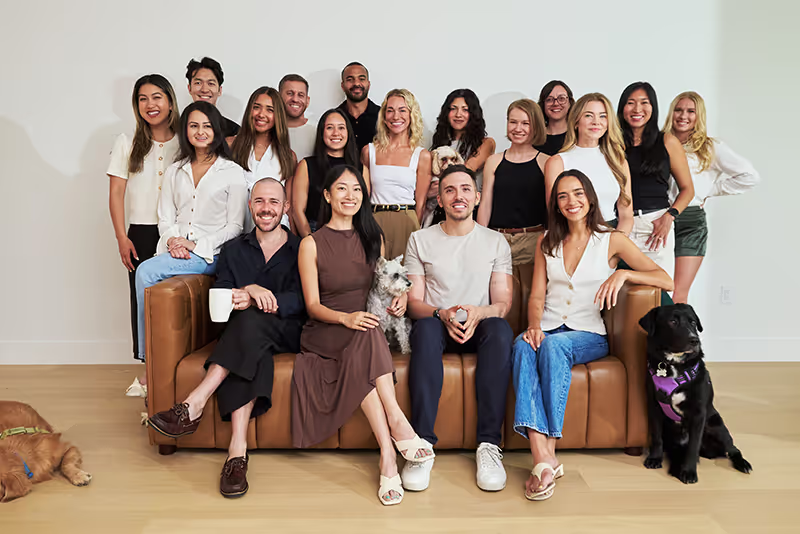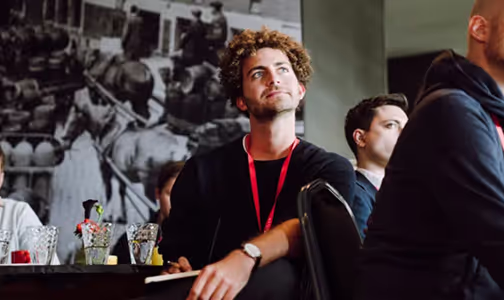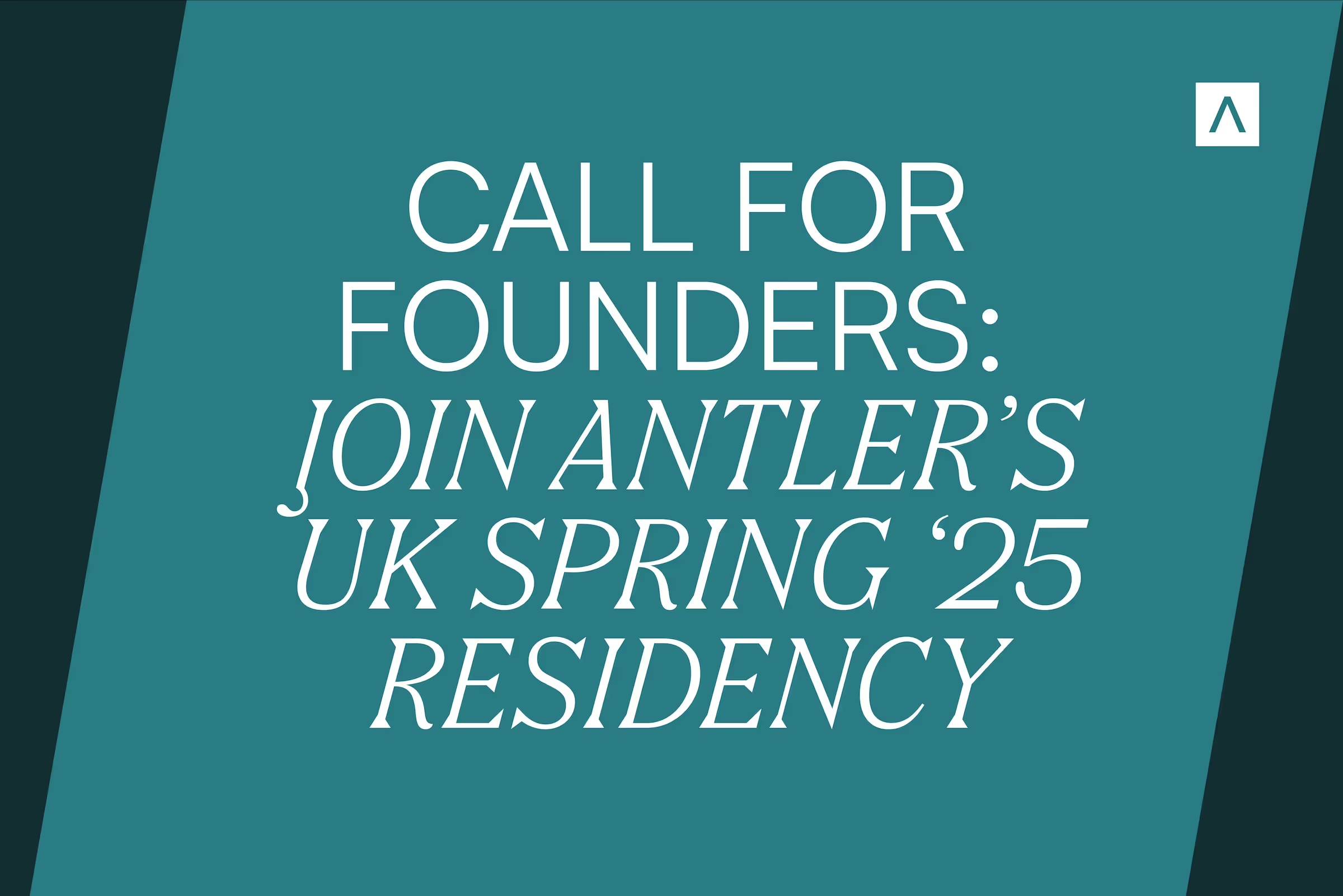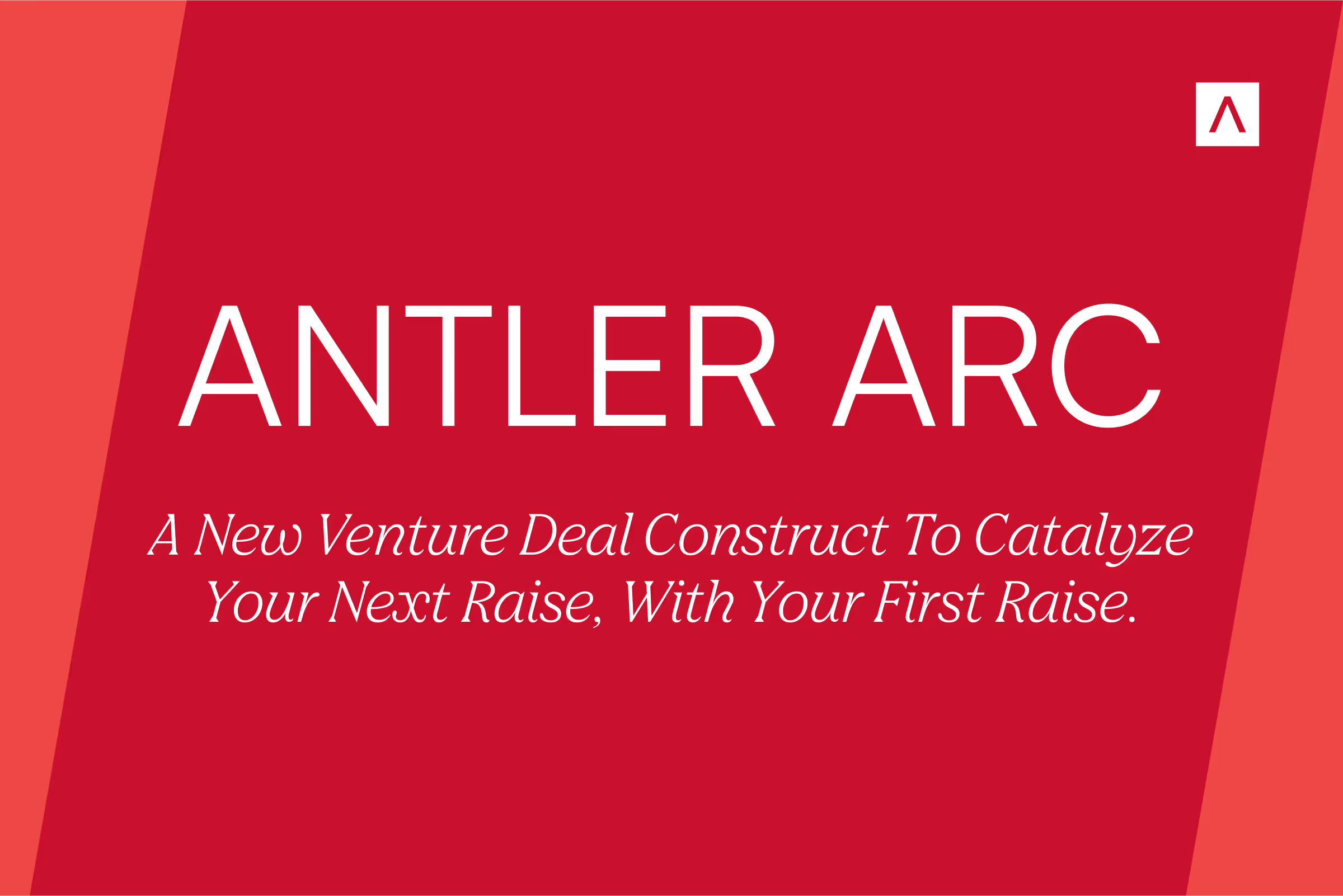This is part of Antler's "Finding the Upside" series, aimed at supporting and empowering the entrepreneurial community during the Covid-19 pandemic.
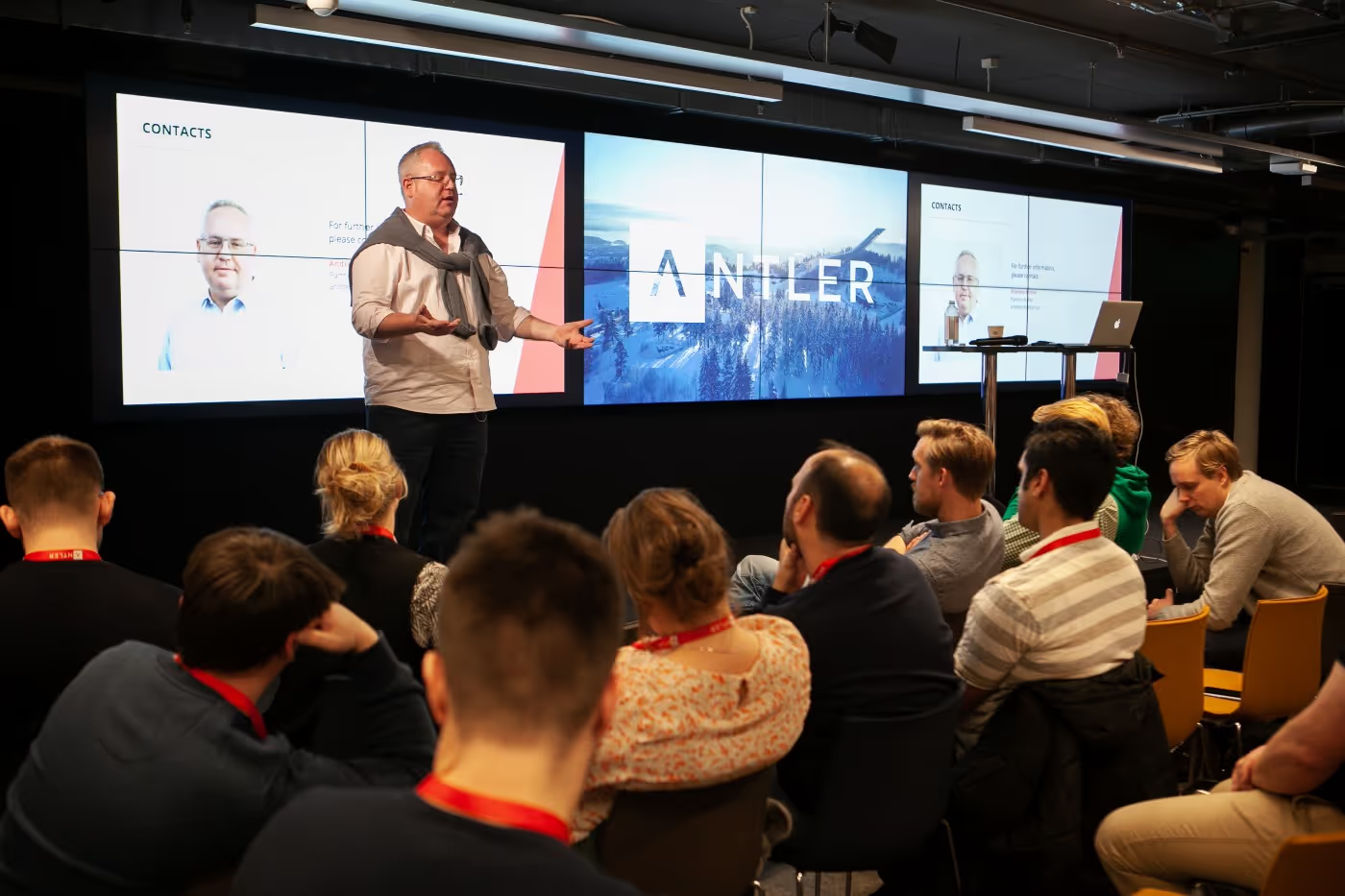
Innovation is hard because "solving problems people didn't know they had" and "building something no one needs" look identical at first.
Right now, there are opportunities for entrepreneurs to build meaningful, disruptive businesses.
We've seen in the past that those who identify opportunities to innovate and create breakthrough technology ventures off the back of a crisis, not only can find individual success but can also help bolster and support the entire tech ecosystem as it recovers. Just look at Airbnb, Uber and Square.
So, how do you leverage the benefits of increased connectivity, disruption and new economies and turn a turbulent time into an opportunity to successfully innovate?
Antler Global Partner Andreas Birnik, is a master in identifying new ways to innovate.
In a recent talk to Antler's Sydney program, he shared his three main frameworks for looking at innovation:
Here's his breakdown of each framework, examples of categories and businesses which have excelled in this type of innovation, and his advice for those looking to enter that space.
"A lot of founders coming into Antler bring a preconceived idea of what innovation is like," says Birnik. "This is often based on their past experience. As an example, someone who is a hardware engineer, might be locked into thinking that innovation is all about just product innovation. I use these frameworks within Antler to help founders 'unfreeze' in order to look at innovation from multiple different perspectives. Doing so allows them to go beyond ideas they brought into Antler and to work together with potential co-founders to explore breakthrough innovation ideas."
"These frameworks are tools to help us understand and interpret the world... they provide a form of intellectual scaffolding to make sense out of an innovation jungle that is at times fast-moving, bewildering and partially hidden from view."
Product Innovation
This relates to the improved performance of existing products, inventing new products, product virtualisation, or embedding a social element into products.
Using the examples of Google and its disruption of internet search, Wikipedia and its disruption of the printed encyclopedia, to Apple and the phone and what OTT music and video streaming services have done to their relative industries, he says, "it illustrates how easy it is to become irrelevant."
"Google has become the undisputed leader in internet search. [But] at the end of the 1990s, the three largest web properties by traffic were Yahoo, Excite and Altavista - all have been erased from living memory," says Birnik.
He adds: "You had Encyclopedia Britannica being printed for 244 years, and then they were wiped out by a crowdsourcing movement created by Wikipedia . In 2010, Encyclopaedia Britannica issued its last print edition. And soon people will have all but forgotten about it.
"It shows how you as a startup can come in and topple a giant with a product innovation, which in this instance was crowdsourcing."
Product Innovation however is not just about creating new products. It also relates to a new player coming into an industry and fundamentally reinventing categories.
Birnik uses the example of Apple's launch of the iPhone.
"Prior to that, we were all used to phones looking a certain way," he said. "Steve Jobs came in 2007 with the first iPhone, fundamentally reinventing the phone into a handheld computer.
"Product innovation can also be about reinventing categories that people think are done. One example of this is video conferencing. This category was considered 'done' with products like WebEx, Skype, Facetime and Bluejeans. And in comes Eric Yuan with Zoom and topples giants with a re-invented product experience for video conferencing."
Within product innovation, Birnik says a common theme that has emerged in virtualisation.
"You used to go to a book stores and by and large now these stores are becoming extinct in many cities of the world, and people are using Amazon Kindles or e-readers. We also see video stores becoming extinct, such as Blockbuster. Just like Amazon has virtualised books, players like Netflix has virtualised movie rentals," he says.
"Blockbuster which once itself was a category killer, was as of January 2020 down to a single store in Bend, Oregon famously known as the world's last Blockbuster store."
He says the music industry is another prime example of virtualisation.
"Spotify, Apple Music and Amazon Prime Music have replaced physical records as well as record stores; radio channels are under pressure."
Product category after product category has become virtualised - think movies, records, books, and more.

Process Innovation
This relates to new manufacturing processes, online shopping, online dating, digital self service, automating processes, and process virtualisation. The common thread here is that end product or end results are achieved through a novel production production process.
Birnik spoke about everything from Henry Ford's introduction of the moving assembly line in 1913 prior to which cars were built one by one in a workshop, to e-commerce, where the process of shopping has fundamentally changed, along with lab grown meats, food delivery services, the gig economy as a whole, online dating and more.
"The gig economy and freelancer platforms such as Fivrr, TaskRabbit, Airtasker and UpWork provide platforms for freelancers to offer their services and complete client assignments," he says.
"It's process innovation for finding people to complete work for you in a very efficient way.
"Then you have Tinder: computer assisted mating. 20-40% of straight couples in western economies today meet online, and in the gay community more than 60% meet online. It's a fundamental reinvention of the process of finding a partner, widening your search beyond your own network or the local bar."
He continues: "Contactless payment, this is relatively new that you just tap and go. Only a few years ago you had to enter the pin code or sign, now you tap and go regularly.
"Just like with physical product categories, we also see virtualisation happening with processes. One of the best examples is telemedicine where patients in many countries can schedule a video conference consultation with a doctor, describe their symptoms, receive prescriptions via e-mails and be sent directly to labs for further testing."
Business Model Innovation
Examples include sharing economy models, subscriptions rather than product purchase, fixed fee services, financing plans, and crowdfunding.
To explore this framework, Birnik kicks off with one of the most relatable frameworks: ridesharing, using Uber, Lyft and Grab as examples of companies doing this across the world.
"Ridesharing apps have become an alternative to taxis and even car ownership," he says.
"Ridesharing apps have made taxi rides more affordable and plentiful as the cost has been reduced, demand has surged, and sometimes urban residents are even opting to give up personal car ownership altogether."
He continues: "Home sharing, just look at Airbnb. Just like Uber is the largest taxi company in the world without having any taxis, Airbnb is the largest hotel company without having any hotels. This is business model innovation. "
He went on to touch on WeWork and shared office space, SaaS models, consumer goods subscriptions in which membership means you are delivered 4-6 product shipments per year, and fashion rental services such as Rent the Runway which offers subscription plans for fashion items to women as an alternative to buying clothes. Another example was ClassPass and Priority Pass, aggregating independent providers into consolidated subscription plans.
Beyond the above frameworks, classifying innovation into Product Innovation, Process Innovation and Business Model Innovation, Birnik says entrepreneurs should also be cognizant about the differences between Sustaining Innovation and Disruptive Innovation.
Sustaining Innovation
This has to do with improving products in existing markets, says Birnik.
"Big corporations are excellent at doing this," he says. "You listen to customers to understand their existing and anticipated needs. You do focus groups, you research, you hire consultants and very often you come up with incremental product improvement such as car models and phone models. Little by little you push the performance function forward."
"The key risk here is that you fall in love with your product, or in-house technical capabilities, rather than with the underlying problem that your customers are facing. Once you launch a product, the momentum can become self-sustaining. If you are RIM, you think about how to incrementally come up with a better BlackBerry, not how you can come up with a fundamentally different design like the iPhone. In short, your legacy and capabilities creates path dependance making it very difficult to innovate in fundamentally new ways."
Disruptive Innovation
"Startups are often good at disruptive innovation... where you are launching new products that customers don't even know what they want," he says.
Disruptive innovation focuses on creating new products for new markets, often initially operating below the radar to serve small segments that are not attractive to mainstream corporations.
"A good example of disruptive innovation is computer based 'Office-type applications'," says Birnik. "It used to be the case that anyone serious in a company would use the Microsoft Office suite. Google docs were simply not taken seriously by anyone in a company. But these days, whenever I ask founders what tools they are using, a majority have switched to Google docs. And the same goes for voice calling. In the 1990s, anyone serious would use voice services from their telco. Using a VoIP service like Skype was not serious - in fact, a bit geeky like using a ham radio to communicate during the early days. And these days, fewer and fewer people use anything but data from their telco. Voice calls are made over WhatsApp, Viber, WeChat, Telegram, Facetime, Skype, etc."
"How does this happen? It is due to improved performance trajectory over time as noted by Harvard Business School Professor Clayton Christensen. The idea is that products improve over time. For established products, this typically means that they begin to overshoot what mainstream customers really need. Think about Microsoft Excel adding more and more features every year while most users have pretty much the same needs. This opens up for a new entrant with basic functionality. Initially, they typically target marginal segments, perhaps with limited willingness to pay. But then over time, their product also improves and eventually the functionality meets the needs of mainstream customers. And after that moment in time, they are no laughing-matter any longer. And that is how new entrants can topple giants."
Finally, when it comes to Solution-Oriented Innovation versus Problem-Oriented Innovation the two can be differentiated by their approach.
Solution-Oriented Innovation has an Inside-out Approach to Innovation while Problem-Oriented Innovation has an Outside-in Approach to Innovation.
Solution-Oriented Innovation
"This is typically where big corporations spend their time. They design a solution for potential
customers and then they introduce the solution to the prospects," Birnik says.
"It's often based on identifying a trend and then thinking about matching products and services. It's often a rather linear process, and very often you're at risk of falling in love with the solution or your technical capabilities, rather than with the problem.
Problem-Oriented Innovation
"What we really encourage at Antler is Problem-Oriented Innovation," says Birnik.
Typically it's a non-linear process which involves ethnographic interviews followed by low-
fidelity and high-fidelity mockups moving gradually towards an MVP.
"If you fall in love with a problem rather than a particular solution, you unleash creativity," he says. "You also allow your potential co-founders to truly feel that they are part of the innovation process and that way they get full ownership. Hence, I always encourage founders to look for a true co-founder and not just for someone who is a full stack developer to slavishly implement their product vision. If you plan on giving up 33% to 50% of your company, depending on if you are 2 or 3 co-founders, that should be to people who are truly co-founders rather than in something that looks like an outsourced dev shop arrangement."
READ MORE FROM THIS SERIES:
This article was written by Sarah Kimmorley, Director of Communications at Antler in Sydney. This article is based on Antler Global Partner Andreas Birnik's presentation "Ways to Innovate".
